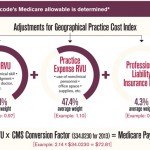Timothy Laing, MD, a professor and rheumatologist at Michigan Medicine at the University of Michigan in Ann Arbor, will once again represent the ACR on the American Medical Association’s (AMA) Relative Value System Update Committee (RUC). His most recent selection represents the third time he has served in this rotating role on the committee.
“The RUC represents the entire medical profession and is the primary advisory committee represented by each of the 109 specialty societies seated in the AMA House of Delegates,” says ACR Executive Vice President Steven Echard, IOM, CAE. “It is an immense accomplishment for the ACR to have a RUC member who can voice the crucial role of internal medicine and the technical role in the house of medicine.”
The Centers for Medicare & Medicaid Services (CMS) uses the relative value scale to decide how physicians should be paid for their services, based on the resource costs to provide them. The RUC is charged with helping determine these values.
“We are the stewards of public resources,” says Dr. Laing. “In aggregate, CMS spends more than $725 billion per year on physician services.1 We help establish the benchmarks for how physician services are valued relative to one another.”
Code Review
The process begins when the RUC is charged with reviewing new and updated Common Procedural Technology (CPT) codes, the identifiers used to describe the medical procedures and services offered by practitioners and used by health insurers (public and private), billers, medical guideline developers, educators and more to describe the work clinicians do to serve patients.
Three times each year, the AMA’s CPT Editorial Panel convenes meetings at which the 31 members of the RUC are asked to review the approximately 10,000 CPT codes and determine the resources required to provide the described services. Technology and improvements in efficiency can alter the resource demands of any given service.
The first step involves surveying member societies that use or will use a given code, asking them detailed questions to understand how the code is or will be implemented. The RUC then compares the CPT codes to others in a cross-referencing process that helps the committee arrive at a relative value unit, Dr. Laing says.
The RUC considers physician work, practice expense and the cost of professional liability insurance when evaluating the relative value unit for a particular service. Physician work accounts for an average of 51% of the total relative value for each service, practice expense is roughly 45%, and liability insurance makes up the remaining 4%.

